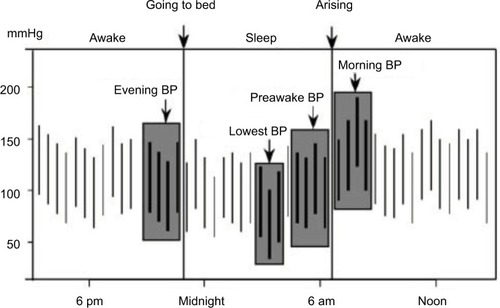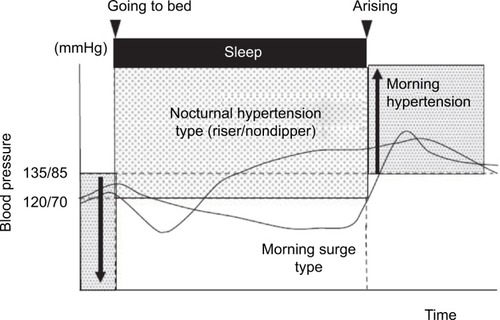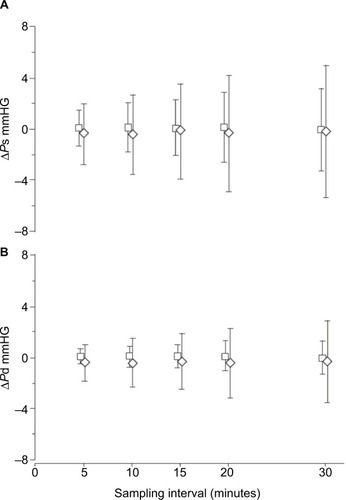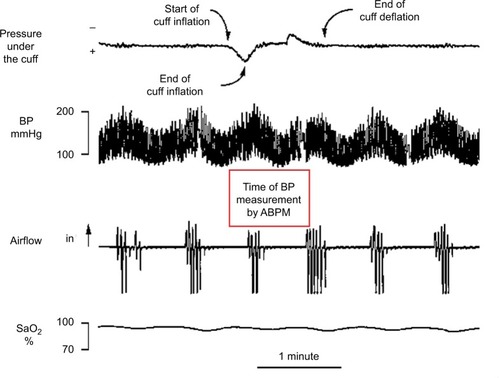Figures & data
Figure 1 Measurements of morning blood pressure surge (MBPS).

Figure 2 Different blood-pressure profiles in two subjects with high sleep-trough morning blood pressure surge (MBPS).

Figure 3 Means ± SD of (A) ΔPs and (B) ΔPd values in control (□) and obstructive sleep apnea (◊) subjects for each sampling interval.

Figure 4 Fragment of a polygraph recording in a representative sleepy patient with severe obstructive sleep apnea.

Table 1 Studies based on morning and evening BP measurements
Table 2 24-Hour BP characteristics in obstructive sleep apnea: beyond dipping and nondipping
Table 3 Changes in BP variability associated with CPAP treatment
